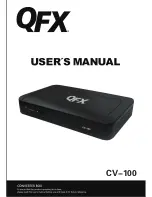
d) Work mode
There are 4 work modes for your selection. They are only available when On-grid Mode.
Battery will stop discharing to keep higher capacity when the
grid is on. Only when the gird is off and the power generated is
not enough, battery will start to discharge to keep the
emergency load working normally.
This work mode applies to the area where suffering from
blackout regularly.
The priority of inverter output power is:
supplying the load feeding to the grid charging the
battery.
This work mode applies to the area with high feed-in tariff.
Self Use
(default)
Force Time Use
Back Up Mode
Feed in Priority
The power from the external generator in the home system will
be used to supply the local loads first, followed by charging the
battery. The redundant power will be exported to the grid as set
in Export Control. When there is no extra power generated,
battery will start discharging for local loads usage, and Grid will
supply power when the battery power is not enough.
In this work mode there are two force charging periods can be
set flexibly, and also an option of whether it can charge from the
grid or not. It will work as Self Use out of the charging period.
Parameter
Comment
>Mode Select
Force time use
Work Mode
> Charge
Start time 1
08:00
Work Mode
>Charger period 1
From Grid
Enable
Work Mode
For “Force Time Use” mode, there are 2 parameters that needs to be set.
> Charge
End time 1
08:00
Work Mode
>Charger period 2
From Grid
Enable
Work Mode
> Charge
Start time 2
08:00
Work Mode
> Charge
End time 2
08:00
Work Mode
Setting
Setting
56
57
e) Relay Control
Relay Control is a reserved function which can control designated load
intelligently by consuming the surplus energy when feed in power reaches
certain value.
This function will require an external accessory "Smart Plug" which is being
developed. For specific operation, please refer to “ Smart Plug user manual”.
>Relay1 Setting
Relay2 Setting
Relay Control
f )Self Test (applies to CEI 0-21 only)
The self test function allows user to test the following items.”ALL test” , ” Ovp(59.S2) test”,
” Uvp(27.S1) test”, ” Uvp(27.S2) test”, ” Ofp(81>.S1) test”, ” Ufp(81<.S1) test”,
” Ofp(81>.S2) test”, ” Ufp(81<.S2) test”, ” Ovp10(59.S1) test”.
In the self test interface, user can
test
choose “ALL test” or individual test item.
Please make sure the inverter is grid-tied before testing test.
For all test, it needs about 6 minutes. And it will display”success” then “Pass” on the
display.
For individual test item, it needs about several seconds or minutes.
Click test report to obtian all items test result.
ALL Test
Test report
Uvp(27.S1) test
Ft: 51.50Hz Tt:1000ms
Fs: 0.00Hz To: 995ms
F0: 0.00Hz pass
>Ofp2(81>.S2)result
Vt: 264.5V Tt: 200ms
Vs: 0.0V To: 192ms
V0: 0.0V pass
>Ovp2(59.S2)result
Vt: 92.0V Tt: 200ms
Vs: 0.0V To: 200ms
V0: 0.1V pass
>Ufp2(27.S2)result
Vt: 195.5V Tt: 400ms
Vs: 0.0V To: 391ms
V0: 0.1V pass
>Uvp2(27.S1)result
Ft: 50.50Hz Tt: 100ms
Fs: 0.00Hz To: 94ms
F0: 0.00Hz pass
>Ofp2(81>.S1)result
Ft: 49.50Hz Tt: 100ms
Fs: 0.00Hz To: 96ms
F0: 0.02Hz pass
>Ufp2(81<.S1)result
Ft: 47.50Hz Tt: 4000ms
Fs: 0.00Hz To: 3997ms
F0: 0.02Hz pass
>Ufp2(81<.S2)result
Vt: 253.0V Tt: 600 s
Vs: 0.0V To: 600 s
V0: 0.0V pass
>Ovp10(59.S1)result











































